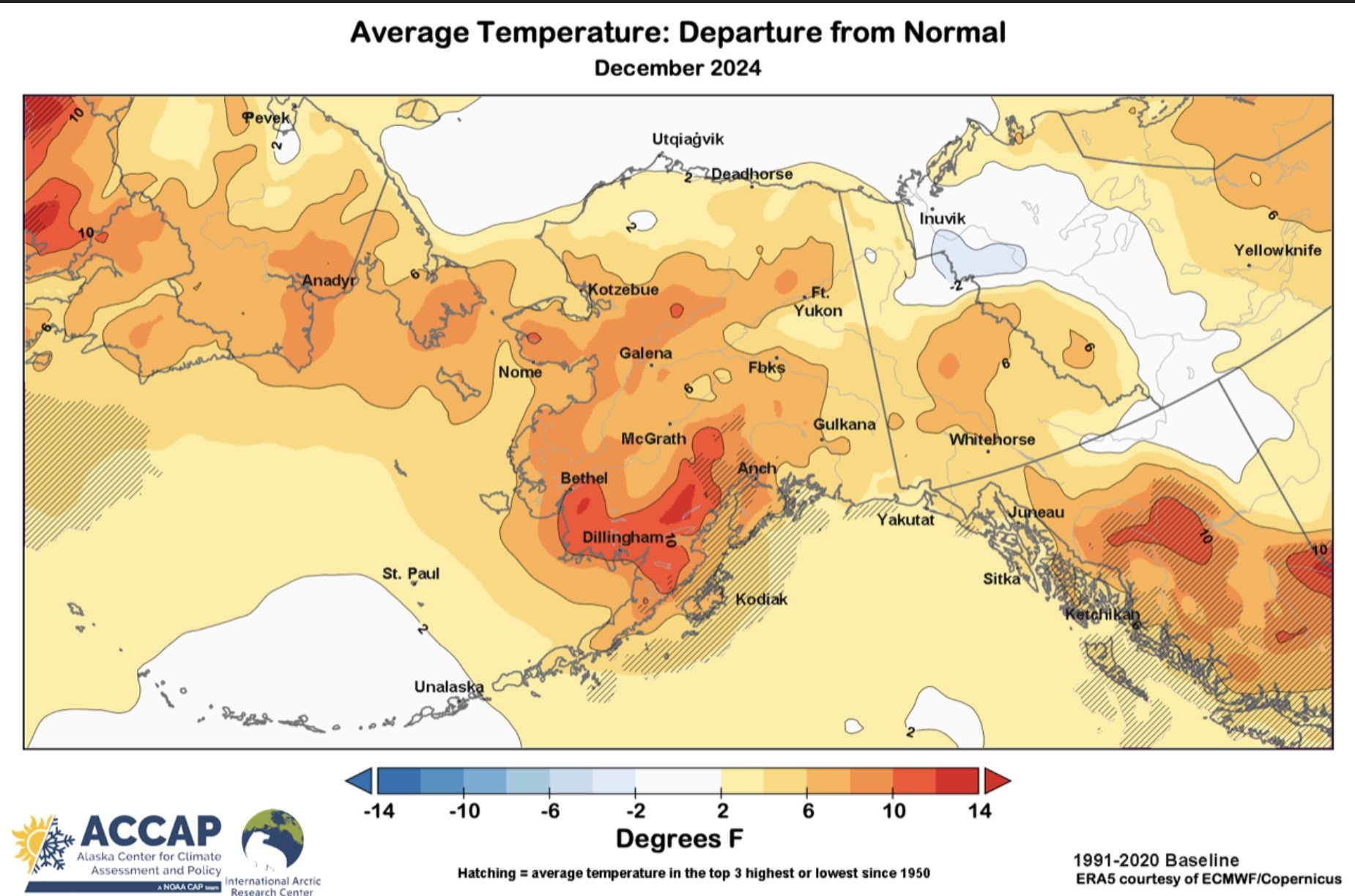A Heating Planet and La Niña add to Colder Spring with Less Precipitation in Southcentral, Scientists Say
Lawns, icy roads, and sand trucks in mid-January in Girdwood. (Photo by Soren Wuerth)
By Soren Wuerth
TNews Editor
A series of warm winter storms that have walloped Girdwood and Southcentral Alaska in recent weeks has caused power outages, difficult travel, downed trees, avalanches and mudslides.
Climate change—driven largely by ever-increasing amounts of oil pollution—has increased the severity and unpredictability of weather events, scientists say, so that new monikers have spread, such as the "climate emergency", "climate chaos", and "global heating".
Last year was, globally, the warmest year on record. Alaska has warmed by more than 3 degrees in 50 years with the biggest changes taking place in the winter, according to climate scientists, and, they say, "the frequency of avalanches, landslides, floods and coastal storms is increasing in Alaska."
Are recent storms and warmer temperatures in Southcentral Alaska this winter unusual? Unprecedented?
Record-breaking heat waves, widespread warming and above average precipitation plagued the Arctic last year, according to an "Arctic Report Card" issued in December by the National Oceanic and Atmospheric Administration.
"The rapid pace and complexity of Arctic change demand new and strengthened Arctic adaptation and global reductions of fossil fuel pollution," the report summarized.
And, despite above-average snowfall in the Arctic, snow melt is occurring 1-2 weeks earlier in the spring, the report said.
Researchers found December to be a warmer than average month at all its data stations and that it was a "relatively dry month" in most of the state, according to the UAF's Alaska Climate Research Center.
What kind of weather can we expect next in the Cook Inlet region?
Noting severe wind storms and record warming, climate specialist Rick Thoman, in a climate outlook briefing Friday, outlined what happened with weather and forecasts in December and gave forecasts for February into spring.
Generally, there were warmer-than-expected temperatures throughout much of the state, especially in Southcentral and Southeast Alaska as well as a "significant lack of snow" or a "snow drought", Thoman said.
Meanwhile, a "La Niña" climate pattern, during which cold waters in the south Pacific Ocean force a jet stream northward, tends to cause a cooler winter in Alaska. The phenomena is opposite an "El Niño" cycle when warmer waters push the jet stream south leading to warmer and drier conditions in the North.
Both patterns have been amplified by human-caused climate change.
But, while La Niña has caused above-normal precipitation in most of Alaska, the pattern has led to drier conditions in the southern part of the state.
Though La Niña was forecasted its effects only suddenly emerged, Thoman said, and NOAA just issued a La Niña advisory.
"We often see the largest, most consistent impacts from La Niña in the second half of the winter, after New Year's," Thoman said.
Based on historic trends coupled with data from more than 100 models, we can expect drier conditions throughout the rest of winter into spring, according to Thoman.
"The dry tilt comes out more strongly here and that has been intensifying through time," Thoman said. Also, given trends, it will be colder than usual in Southcentral.
The bottom line?
Expect a colder winter with less snow.
Alyeska Resort Day Lodge in the distance with little snow in mid-January. (Photo by Soren Wuerth)






